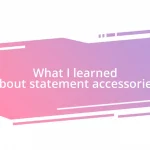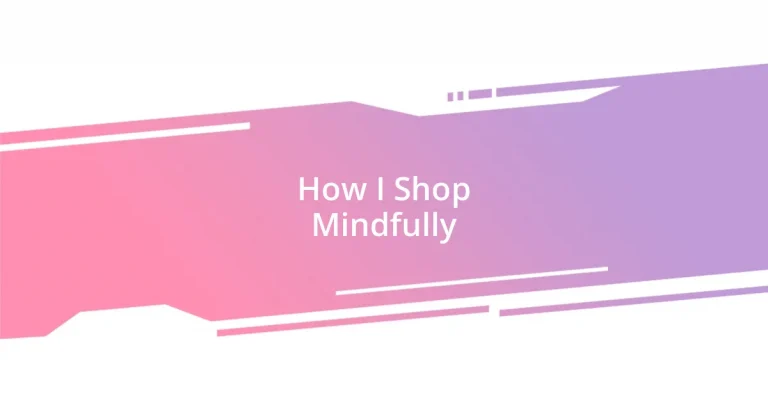Key takeaways:
- Mindful shopping involves introspection about needs versus wants, preventing impulsive purchases driven by emotional triggers or advertising influence.
- Setting personal shopping goals, such as prioritizing needs and sticking to a budget, fosters intentional buying and reduces buyer’s remorse.
- Reflecting on shopping experiences helps identify personal values, encouraging more meaningful purchases and deepening connections with items that genuinely enhance life.
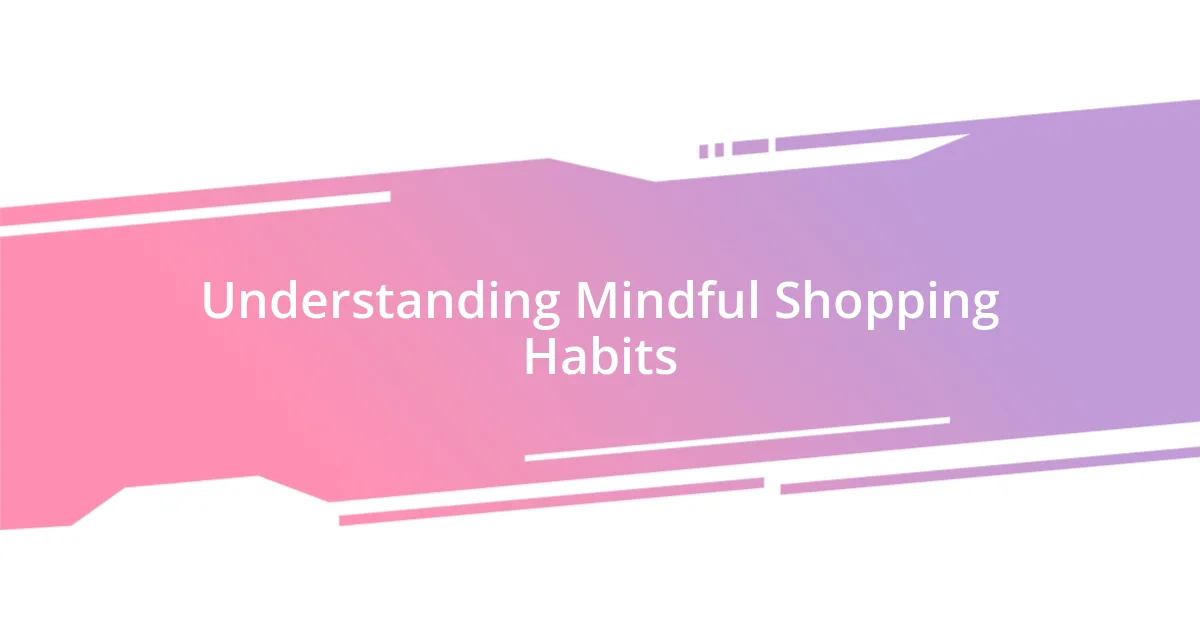
Understanding Mindful Shopping Habits
Mindful shopping isn’t just about what we buy; it’s a deep reflection on why we buy it. I remember standing in a store, looking at a trendy jacket. I had to pause and ask myself, “Do I really need this, or is it just the latest hype?” That moment of introspection helped me realize the importance of aligning my purchases with my values rather than succumbing to fleeting trends.
I’ve found that understanding my emotional triggers can significantly shape my shopping habits. For instance, when I’m feeling stressed, I could easily slip into retail therapy mode. It’s those moments when I must check in with myself: Am I shopping to fill a void? Identifying those patterns allows me to make more intentional choices, ensuring that each purchase genuinely enhances my life.
Being aware of the impact of advertising has been a game changer for me. I’ve caught myself in situations where a well-placed ad made me reconsider a purchase I didn’t initially want. It got me thinking—how often do we buy things simply because they’re presented appealingly? This awareness has empowered me to pause and evaluate whether a product truly adds value to my life, fostering a more thoughtful approach to what I choose to bring home.
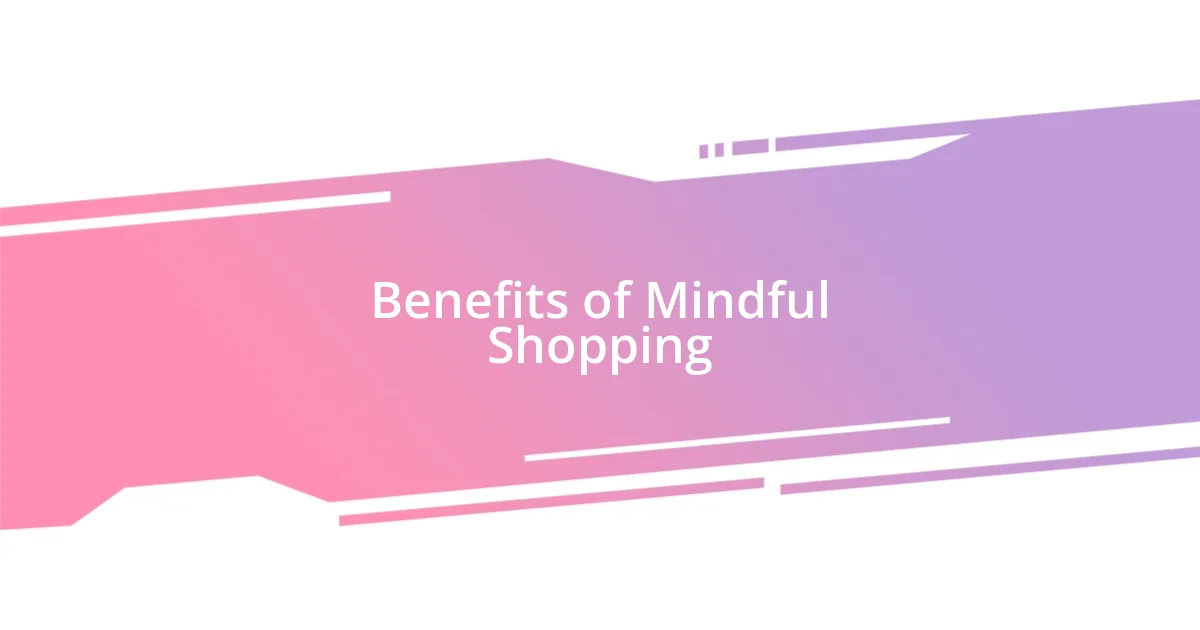
Benefits of Mindful Shopping
Mindful shopping has brought an incredible sense of empowerment to my life. I remember the last time I went grocery shopping, I encountered a plethora of organic products that promised to be good for my health and the environment. Instead of tossing everything into my cart, I took a moment to research how each brand aligned with my values. This conscious choice not only saved me money but also made me feel truly connected to the products I was buying.
Another benefit I’ve noticed is the reduction in buyer’s remorse. A recent experience comes to mind when I held off on purchasing a pair of shoes that caught my eye. At that moment, I thought about whether they fit into my lifestyle or wardrobe. After giving it some time, I realized they would gather dust in my closet. By pausing and reflecting, I curated my collection intentionally, leading to a more fulfilling shopping experience.
Moreover, mindful shopping promotes sustainability. I often choose to purchase second-hand items or local products, reducing my carbon footprint. The joy I feel when I find a unique vintage piece or support a small local business is truly rewarding. It’s not just about acquiring things; it’s about fostering a relationship with the items that enrich my life.
| Benefit | Description |
|---|---|
| Empowerment | Mindful shopping allows for informed decisions that align with personal values. |
| Reduced Remorse | By pausing before purchases, I make thoughtful choices, leading to fewer regrets. |
| Sustainability | Choosing second-hand or local products supports the environment and community. |
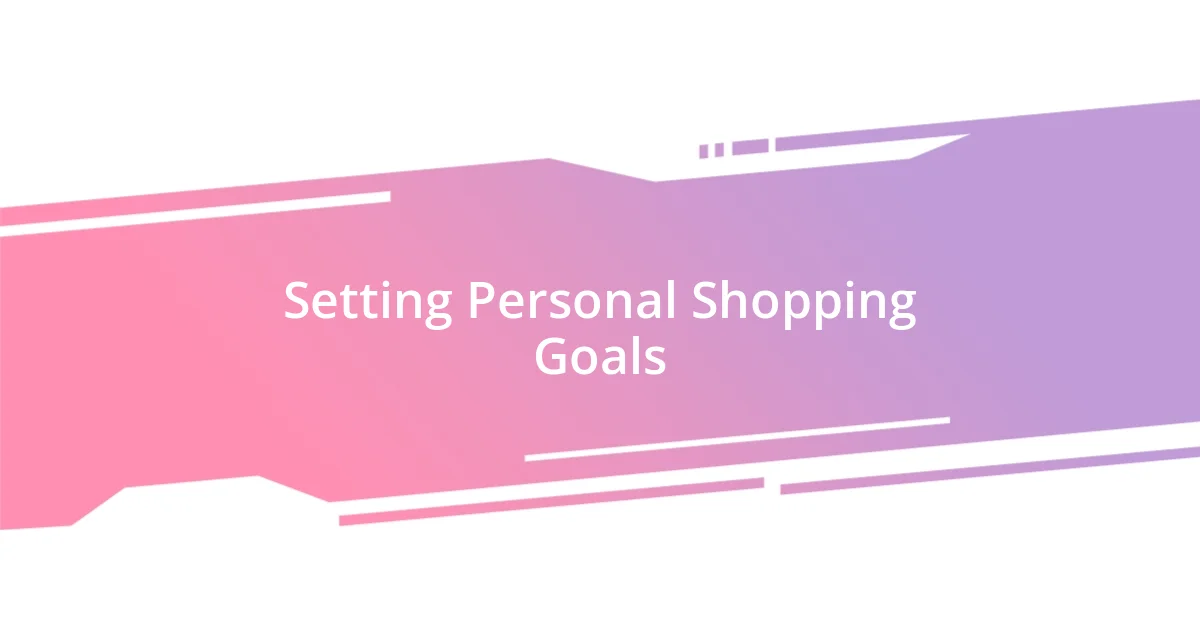
Setting Personal Shopping Goals
Setting personal shopping goals is crucial for cultivating a mindful shopping practice. I remember the excitement of jotting down a list of items I truly needed, like a sturdy backpack for my hiking trips. Each time I go shopping, that list serves as a grounding tool, reminding me to stick to my objectives. It not only organizes my thoughts but also curbs the impulse buys that often lead me astray.
To make your shopping goals more effective, consider these key aspects:
- Identify Priorities: Reflect on what you genuinely need versus what you want. For instance, choosing a reliable product over a trendy one can enhance your experience.
- Budget Wisely: Set financial limits before heading out. Knowing my budget not only prevents overspending but also helps me appreciate the things I buy.
- Long-Term Value: Ask yourself, will this purchase serve me well in the future? I often remind myself of how a quality item can be worth more than several cheaper alternatives over time.
By grounding my shopping habits in these goals, I’ve noticed a greater sense of satisfaction with my purchases. Each item becomes a purposeful addition to my life, rather than an impulse buy I might regret later.
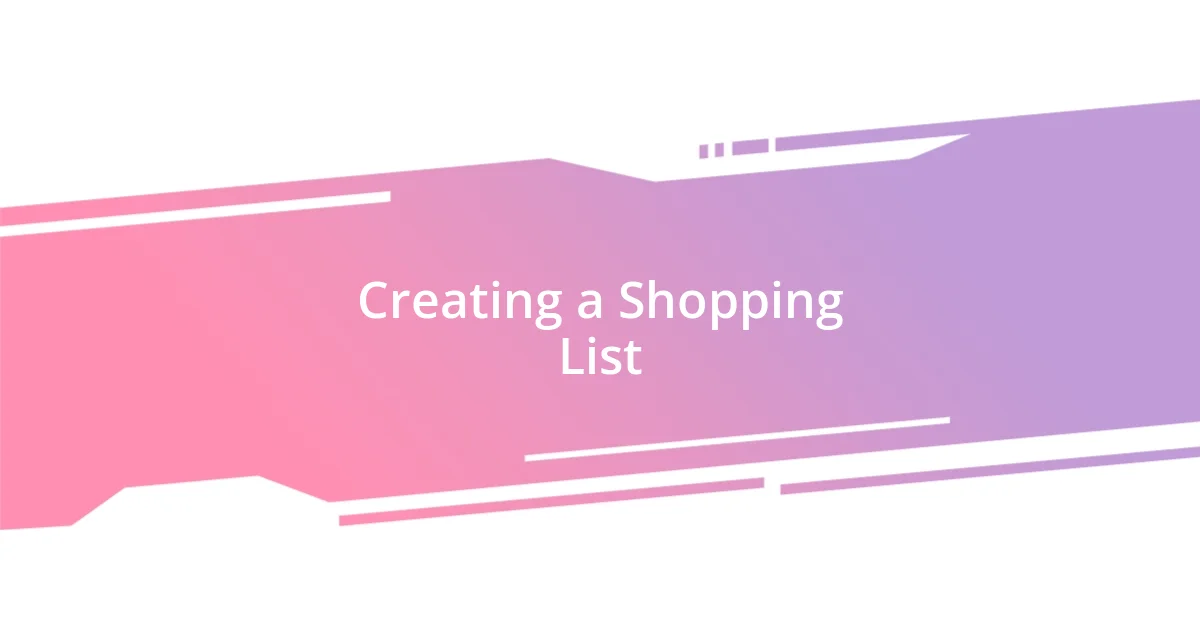
Creating a Shopping List
Creating a shopping list is one of the most effective strategies I’ve employed in my mindful shopping journey. When I sit down to jot down what I truly need, it helps me remove the noise of unnecessary items that often clutter my mind and my cart. I recall a time when I was about to head out for groceries, and I was tempted to buy several snacks. But by sticking to my list, I ended up with healthier options that supported my well-being.
One tip that has worked wonders for me is breaking my list down into categories. It might seem trivial, but organizing items by sections—like produce, grains, and dairy—streamlines my shopping trip and keeps me focused. I remember walking through the aisles, feeling more like a detective than a shopper, hunting only for what I had specifically noted down. This method not only saves time but also reinforces my commitment to mindful choices.
Another thing I’ve learned is to revisit my list after creating it. Sometimes, I take a moment to think about each item and ask myself, “Does this align with my values and my lifestyle?” Recently, I found a beautifully illustrated notebook on a whim, but after reflecting, I realized that I still had several unused notebooks at home. This pause allowed me to avoid another impulse buy and, instead, to take pride in the intentional items I choose to bring into my life.
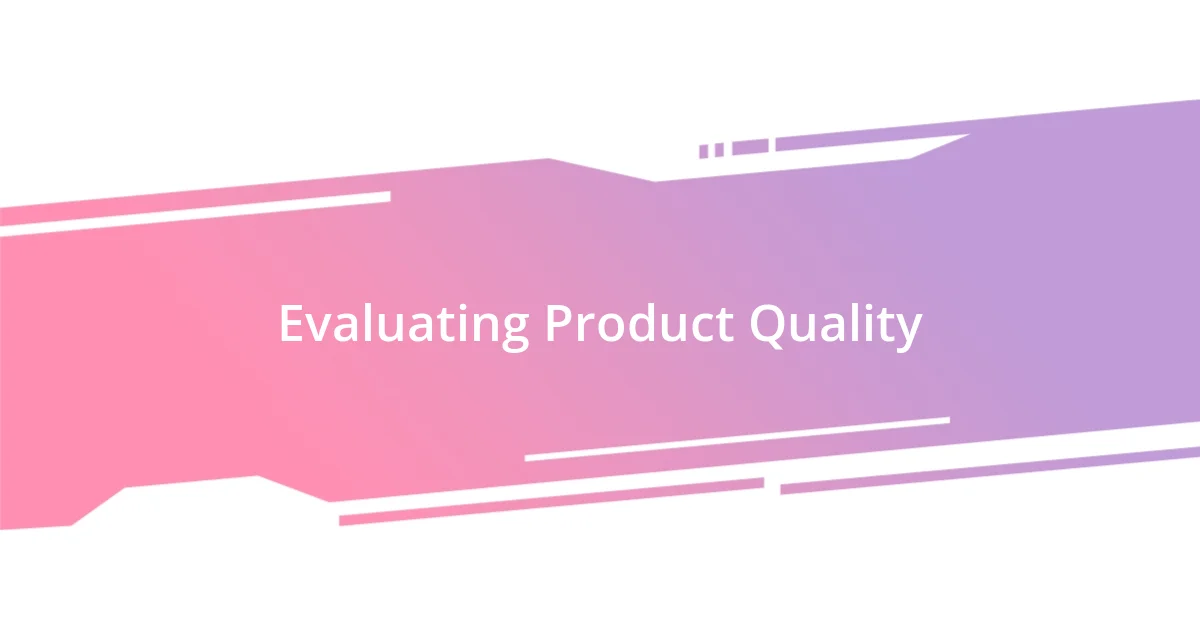
Evaluating Product Quality
When I evaluate product quality, I often find myself inspecting materials and construction details with a discerning eye. For instance, during my search for a new kitchen knife, I spent time feeling the handle and testing its weight. This tactile experience not only brought me joy but also reassured me that I was making a worthwhile investment—after all, isn’t it better to have one excellent knife than a drawer full of flimsy, ineffective ones?
I also think about longevity when considering quality. Recently, I encountered a beautiful ceramic mug that captured my eye. Before deciding to buy it, I examined its finish and heft, weighing my options. Reflecting on my past purchases, I recalled how much joy a sturdy, well-crafted mug brought me during my morning coffee rituals. It’s a simple reminder that the items we bring into our lives should not only please our aesthetic senses but also stand the test of time.
Helpful questions often guide my decision-making process as I evaluate products. I ask myself, “Will this item meet my needs in various situations?” and “How often will I truly use it?” When I recently purchased a high-quality yoga mat, I felt a surge of contentment knowing that it would support both my practice and my desire for sustainability. Combining functionality with ethical considerations, that yoga mat became more than just a piece of equipment; it turned into a versatile tool for my well-being.
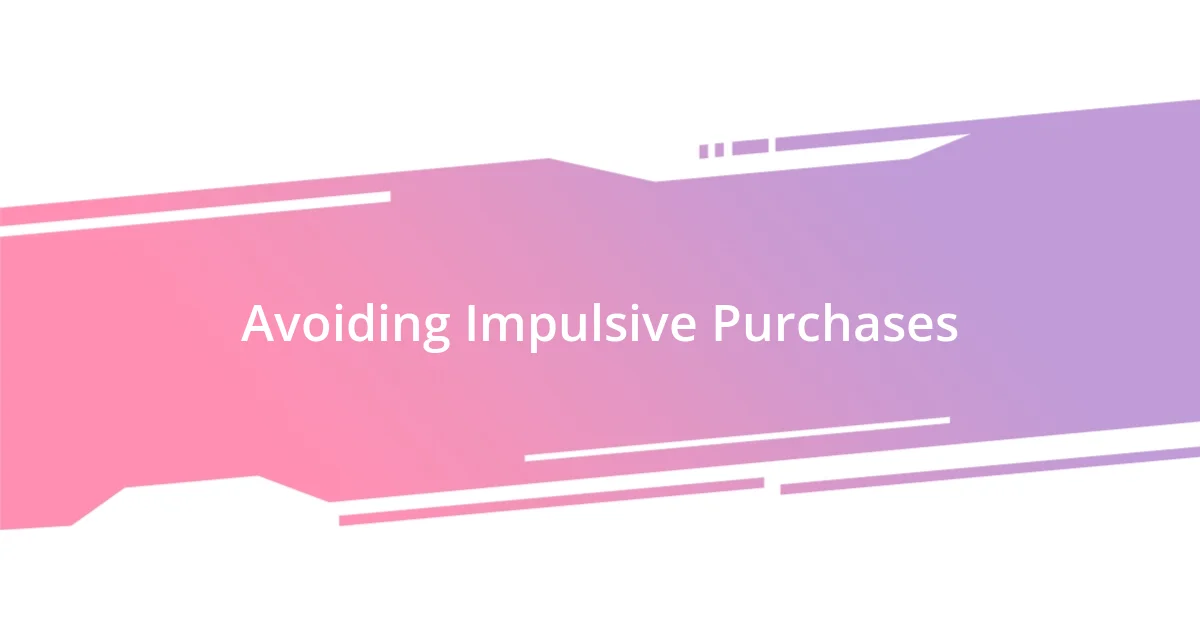
Avoiding Impulsive Purchases
It can be so easy to get swept up in the moment while shopping, can’t it? I remember a time I was in a trendy store, and that adorable sweater caught my eye. The vibrant color and soft fabric practically whispered to me to take it home. But instead of acting on impulse, I paused. I took a deep breath and asked myself, “Do I really need this? What will it add to my wardrobe?” That moment of reflection helped me walk away, reminding me of my commitment to mindful shopping.
One technique I’ve implemented to combat impulsive purchases is the 24-hour rule. Whenever I feel that sudden urge to buy something, I make a habit of waiting a full day. For instance, I once stumbled upon a quirky gadget that seemed so fun, but after sleeping on it, I realized I would probably never use it. That simple waiting period gave me the clarity to understand my true needs and priorities.
Another effective strategy is to identify my emotional triggers. I’ve noticed that when I’m feeling stressed or bored, I tend to shop more impulsively. The last time I felt that nudge, I opted for a walk instead of hitting the stores. Taking that time to engage with my surroundings rather than my shopping cart made all the difference. What’s fascinating is how breaking those patterns can lead to more fulfilling uses of my time and energy. Isn’t it liberating to know that we often have the power to choose?
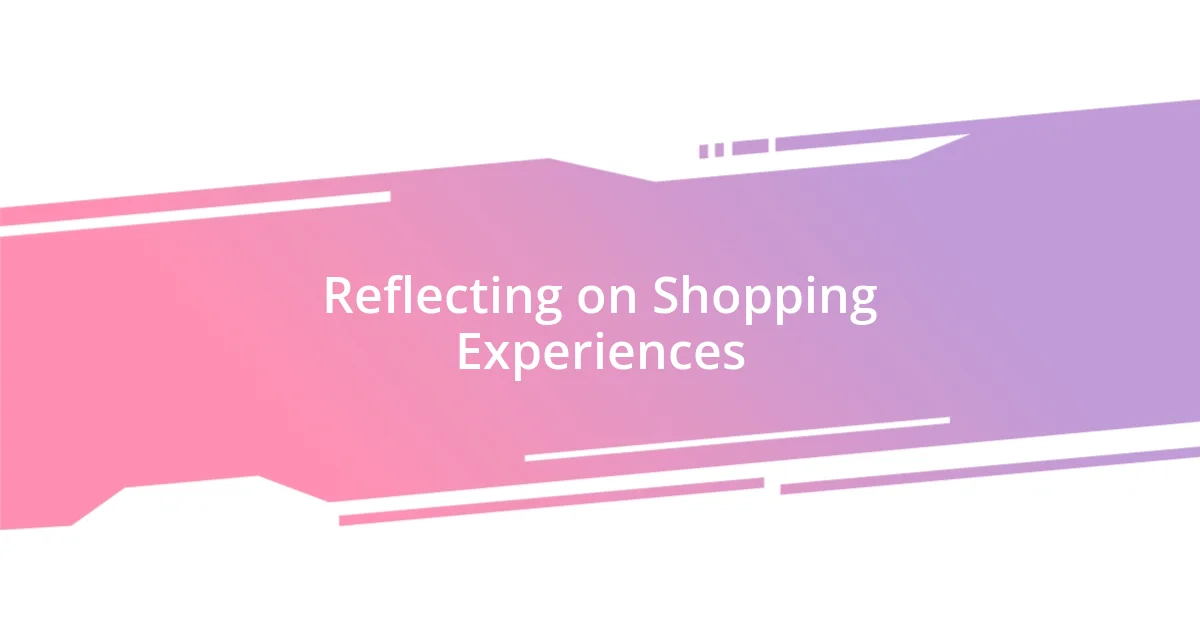
Reflecting on Shopping Experiences
Reflecting on my shopping experiences, I often find that they reveal much about my values and priorities. I recall a time when I purchased a stunning pair of shoes on a whim. At first, I was thrilled, but as I wore them, I realized that the excitement faded quickly. It made me question: was it really the shoes that brought me joy, or was it the chase of acquiring something new? That moment of clarity prompted me to think deeply about how my purchases align with my authentic self.
An interesting aspect of reflection comes when I consider the stories behind my favorite items. Take, for example, the vintage record player I bought from a quaint little shop. Each time I play my cherished vinyls, I’m transported back to that day, filled with excitement and nostalgia. This connection enriches my experience and encourages me to buy less often—but with more intention. Which items in your life have their own stories?
Sometimes, looking back helps me notice patterns in my shopping behavior. I’ve discovered that, more often than not, the items I felt most pressured to buy—the last-minute decisions—often became the least satisfying. I ask myself: What if I focused more on what truly resonates with my lifestyle? By embracing patience and reflection, I find myself sidestepping mistakes and instead surrounding myself with items that truly enhance my happiness and well-being.







